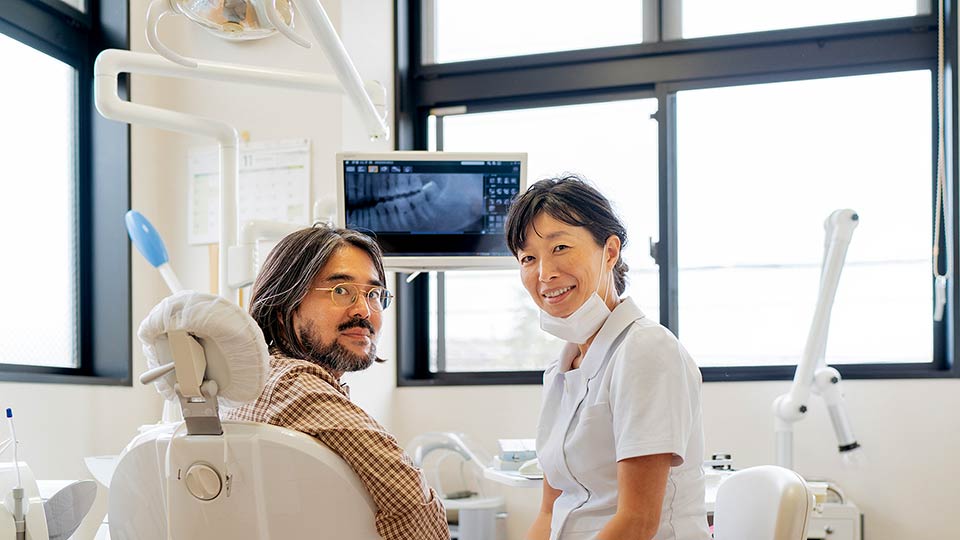I hope my most recent publication, Altered presentation of oropharyngeal cancer, a 6-year review, (Floros et al., 2021) helps reduce the average diagnosis delay of human papilloma virus (HPV) related oropharyngeal squamous cell carcinoma (OPSCC), and leads to improved patient outcomes. The paper, due to be published in the February edition of the Australian and New Zealand Journal of Surgery, demonstrates an urgent need to raise awareness of these cancers among medical practitioners in order to facilitate early detection and treatment.
Delays in diagnosis
Our study reviews 184 patients treated by the St Vincent’s Sydney Head and Neck Cancer Multidisciplinary Team (MDT), between 2012 and 2017 inclusive. It concludes patients with HPV+ OPSCC tend to take an average of 15 weeks to be diagnosed, compared to an average of eight weeks for HPV- OPSCC.
I cannot express how distressing it is to treat patients whose diagnosis has been unnecessarily delayed.
Reduced treatment options and outcomes
Time is critical in the treatment of all cancers, but especially in the treatment of head and neck cancers. Head and neck cancers are typically highly aggressive. Delays in diagnosis can severely compromise treatment options and outcomes. Unfortunately several patients in our study waited more than forty weeks to be diagnosed. Over this period their cancers would have progressed from early stage, where treatment is likely to deliver cure and long term quality of life (QOL), to advance stage, where treatment is likely to be more toxic with increased complications. Their chances of developing recurrent or metastatic disease would have also been impacted.
Many doctors remain unaware of symptoms
I cannot express how distressing it is to treat patients whose diagnosis has been unnecessarily delayed. I treated many of the patients in the study. I remember their stories well. One patient told me he made six visits to four doctors in two months before insisting his general practitioner (GP) refer him to me. Another visited her GP for several months presenting with persistent, unexplained earache before she demanded a referral. Unfortunately these patient stories share one thing in common, a lack of awareness among clinicians of the potential severity of their symptoms.
Neck lumps are key
One of my major frustrations is that the most common HPV+ OPSCC symptom, a neck lump, is obvious to both patient and clinicians. It is not like a bile duct cancer which lurks unseen, and cannot be easily palpated. One of the patients in the study had her neck lump pointed out by her regular beauty therapist. In our study this symptom, alone or in combination, was present in 61.1% of cases. Examining the neck is a relatively straightforward process, however I remain surprised by the number of doctors who fail to perform a physical examination when presented with this symptom.
Persistent, unexplained symptoms are also often present
Our study reported presenting symptoms as neck mass alone 39.5%, neck mass combined with other symptoms 61.1%, and sore throat 13%. Other symptoms include dysphagia (difficulty or discomfort in swallowing), odynophagia (pain when swallowing), otalgia (persistent unexplained earache), bleeding, lump in throat. Non-smokers compromised 45% of the cohort. When these symptoms persist for weeks unexplained they should be further investigated in order to rule out anything sinister.
Improvements over time
The earliest diagnoses included in our study are from 2012. It is now nine years since I treated those patients. I am pleased to say that over that time I have seen an increase in awareness of HPV+ OPSCC among regional GPs. When they are presented with a neck lump in a non-smoking baby boomer I find they are far more likely to perform a fine-needle aspiration biopsy (FNAB) than their metropolitan counterparts. This makes an enormous difference in how quickly patients are accurately diagnosed.
But it is not all good news. In my practice I diagnose patients with HPV+ OPSCC every week, and many of them take too long to reach me. For example, I recently saw a patient who has been aware of symptoms since March last year. He visited his GP and two specialist physicians, a neurologist and a haematologist, before he was referred to me with an advanced tumour. He can thank a vigilant radiologist for insisting a scan of the ear be repeated in order to include the tongue and neck.
Spreading the word
Raising awareness of HPV+ OPSCC among primary doctors, including dentists, is a long term objective of mine and those clinicians and patient advocates working with me. I accept this is a difficult task given the amount of information competing for clinicians’ attention. Therefore patient education is also key, and can be achieved by providing quality information which is easy to read and access. Hopefully it will lead to fewer and fewer patients with HPV+ OPSCC experiencing delayed diagnosis and reduced treatment options and outcomes.
References
Floros, P., Rao, A., McCloy, R. A., Sim, H. W., Chin, V. T., Leavers, B. C., Crawford, J. A., & Gallagher, R. M. (2021). Altered presentation of oropharyngeal cancer, a 6-year review. ANZ J Surg. doi: 10.1111/ans.16537




